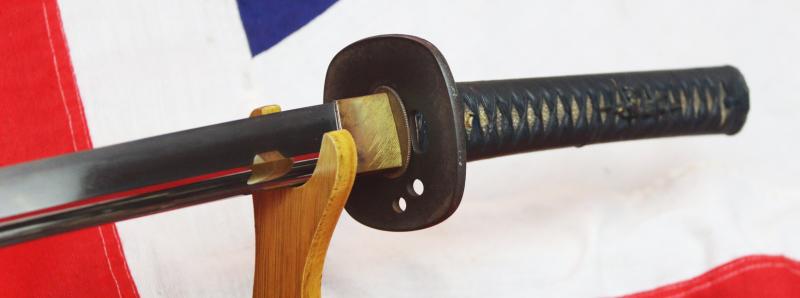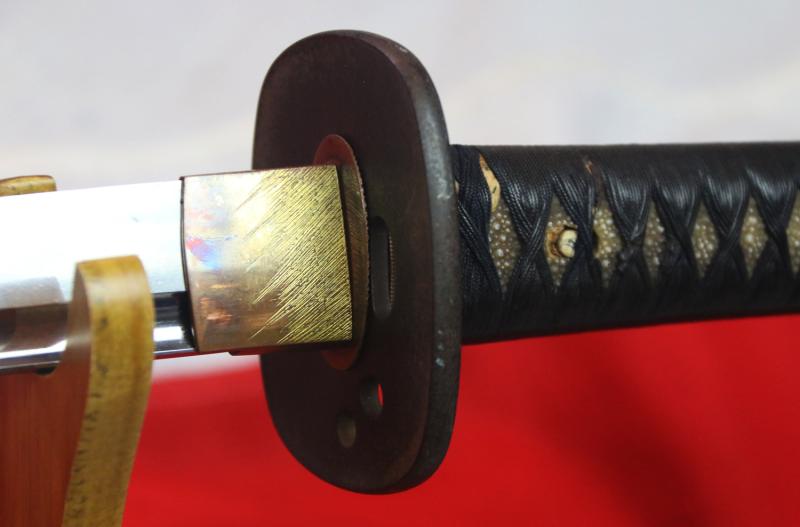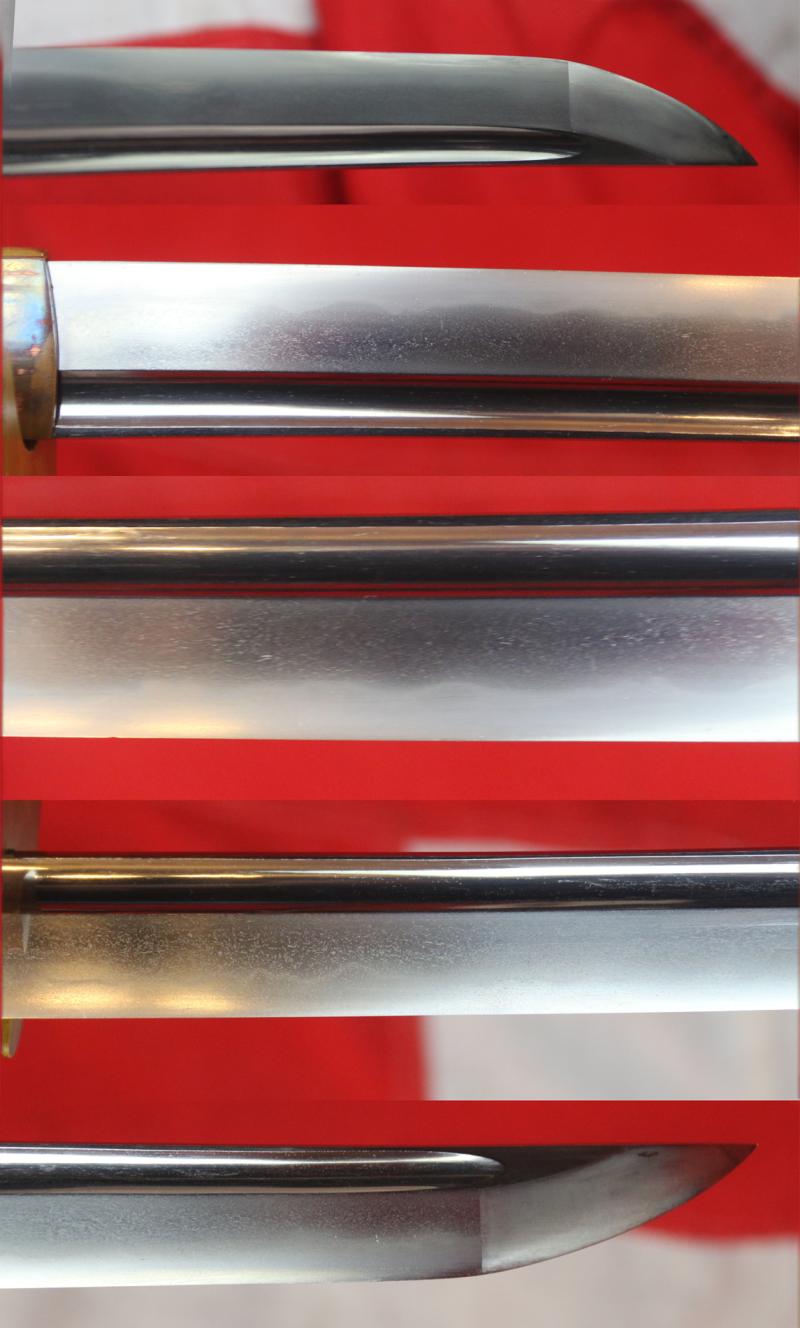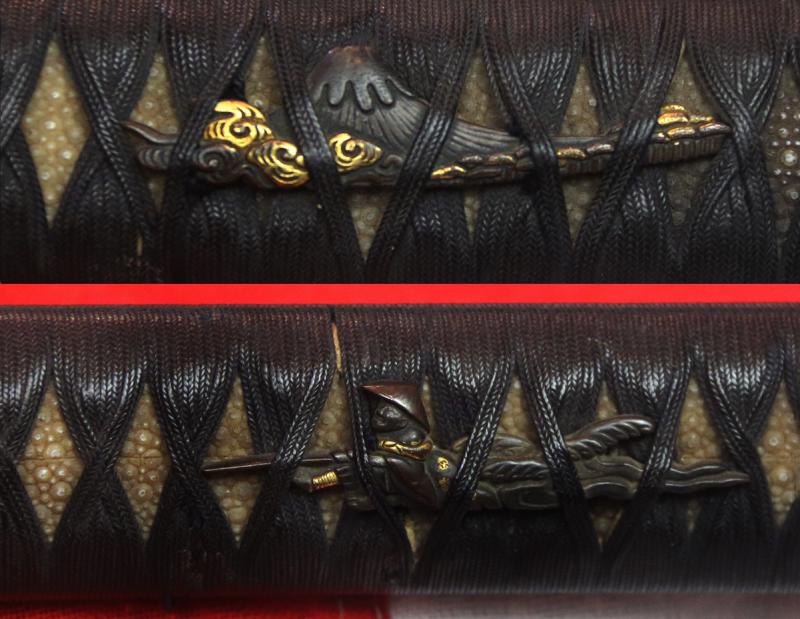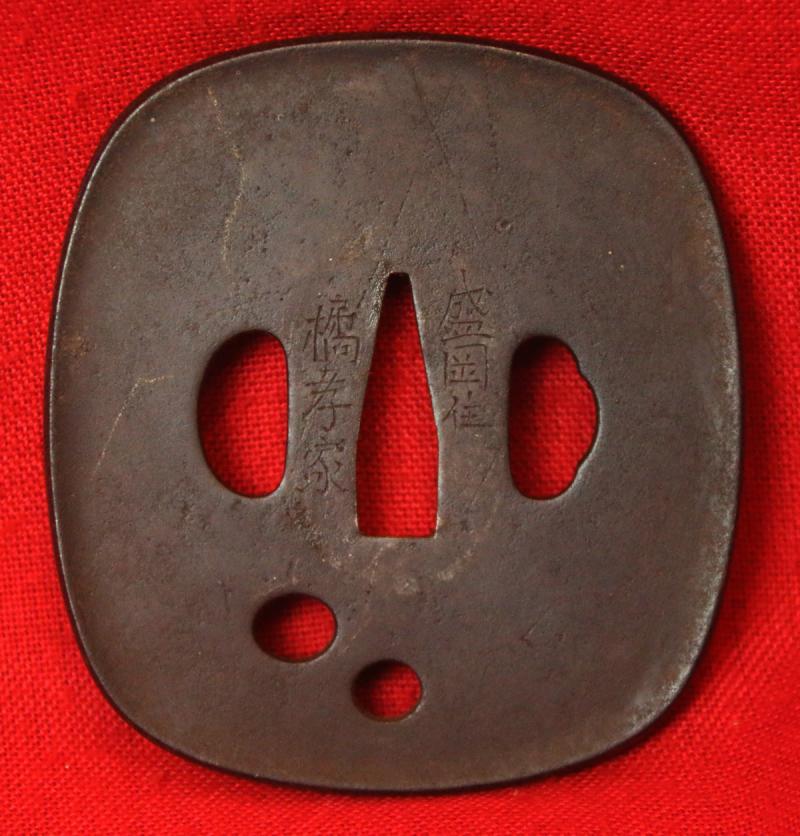A Beautiful, Signed Samurai Long 17th Century Katana With Very Fine Edo Period Mounts Including Fabulous Quality Hand Chisselled Silver Fuchi Kashira of Takebori Turbulent Seas and Sea Shells. Signed Hisamichi
The sword has just returned from our Japanese, trained polisher, for a final hand conservation and it look simply fabulous.
Its fabulous munuki are bound underneath the micro woven plaited tsuka-ito hilt binding, depict takebori gold and shakudo Mount Fuji, and a man running in the waves that are before Mount Fuji. The saya is black urushi lacquer with a carved buffalo horn kurigata and brown sageo wrap. The blade shows a beautiful notare based on suguha hamon, with fine hada. The nakago is signed and bears the signature, Omi no Kami Hisamichi, but not, or very unlikey to be one of the four Mashina school masters, also named Hisamichi.
Very fine signed iron plate hira-kaku-gata tsuba, but when mounted, the tsuba seppa-dai is covered by seppa (metal spacers) and the signature (mei) is not visible as usual. With a mimi {a prominant rim} and a kozuka hitsu-ana, and kogai hitsu ana, and very scarcely seen, twin holes near the rim at the bottom of the tsuba called ude-nuki ana. These represent the sun and moon and were likely used for threading a leather wrist thong to prevent dropping the sword in battle on horseback, and to tie the tsuka to the saya.
The name katana derives from two old Japanese written characters or symbols: kata, meaning side, and na, or edge. Thus a katana is a single-edged sword that has had few rivals in the annals of war, either in the East or the West. Because the sword was the main battle weapon of Japan's knightly man-at-arms (although spears and bows were also carried), an entire martial art grew up around learning how to use it. This was kenjutsu, the art of sword fighting, or kendo in its modern, non-warlike incarnation. The importance of studying kenjutsu and the other martial arts such as kyujutsu, the art of the bow, was so critical to the samurai a very real matter of life or death that Miyamoto Musashi, most renowned of all swordsmen, warned in his classic The Book of Five Rings: The science of martial arts for warriors requires construction of various weapons and understanding the properties of the weapons. A member of a warrior family who does not learn to use weapons and understand the specific advantages of each weapon would seem to be somewhat uncultivated. European knights and Japanese samurai have some interesting similarities. Both groups rode horses and wore armour. Both came from a wealthy upper class. And both were trained to follow strict codes of moral behaviour. In Europe, these ideals were called chivalry; the samurai code was called Bushido, "the way of the warrior." The rules of chivalry and Bushido both emphasize honour, self-control, loyalty, bravery, and military training.
Samurai have been describes as "the most strictly trained human instruments of war to have existed." They were expected to be proficient in the martial arts of aikido and kendo as well as swordsmanship and archery---the traditional methods of samurai warfare---which were viewed not so much as skills but as art forms that flowed from natural forces that harmonized with nature.
Some samurai, it has been claimed, didn't become a full-fledged samurai until he wandered around the countryside as begging pilgrim for a couple of years to learn humility. When this was completed they achieved samurai status and receives a salary from his daimyo paid from taxes (usually rice) raised from the local populace.
Blade 28.3 inches long, tsuba to tip.
Code: 25301
7255.00 GBP



